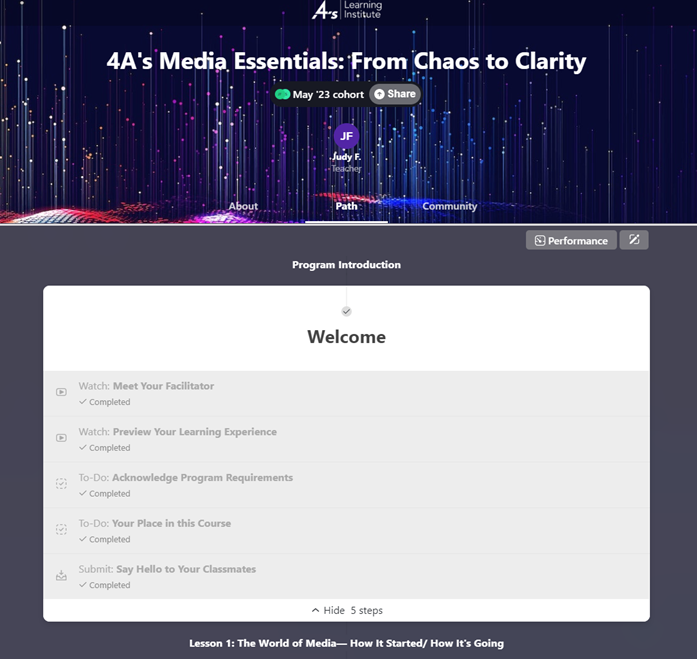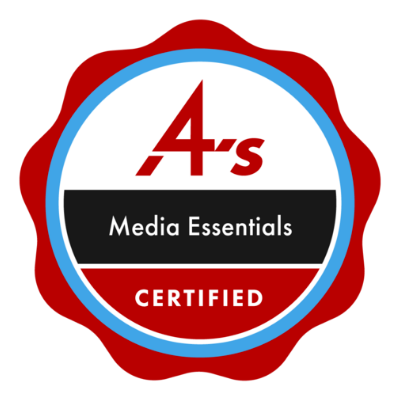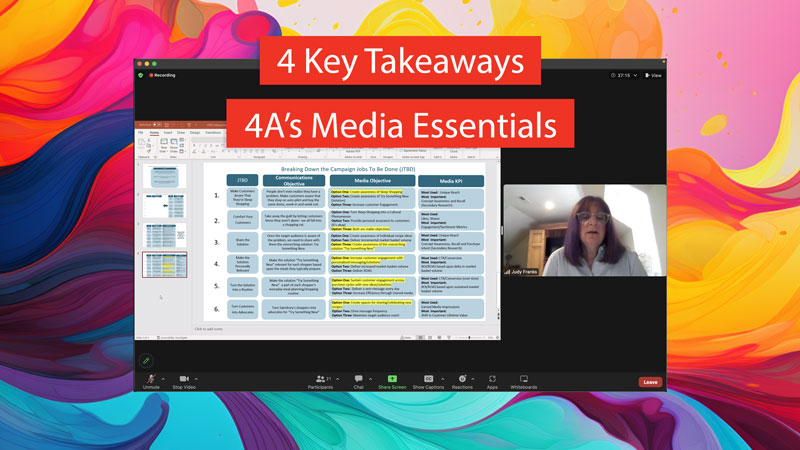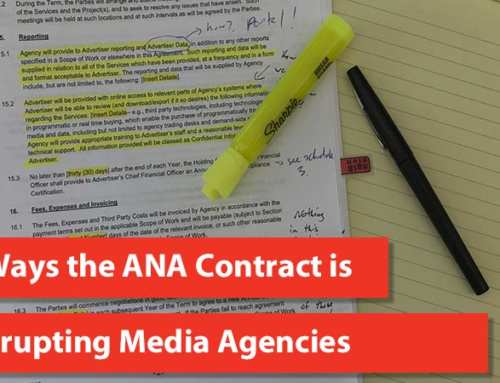They say, “You can’t teach an old dog new tricks.” The Bionic team says, challenge accepted.
In the 4A’s Media Essentials course, we learned how to develop a modern media strategy and media plan, plus the latest trends in the digital media landscape.
We Wanted to Know More About Media Planning and Media Buying
I work on the Client Success team here at Bionic Advertising Systems.
Every day, we help media planners and media buyers to use our media planning and buying software.
We help them to create media plans, flowcharts, RFPs, IOs, naming conventions, ad server trafficking, and everything else in their media planning and media buying workflows. You name it. We do it.
Through this, we get a glimpse into the daily challenges that media planners and buyers face. But only a glimpse.
We wanted to know more.
Enter the 4A’s Media Essentials Course
Just as we were thirsting for this knowledge, an email promotion arrived in my inbox for the 4A’s Media Essentials: from Chaos to Clarity course. Now, that’s good advertising!
This course promised “a Big Picture overview of the digital media landscape and the timely and timeless principles for using media to connect consumers with brands” and “foundational knowledge for new and non-media advertising professionals on a broad range of media subjects.”
As soon as we read it, we were sold. Four of us from the customer success team promptly enrolled.
We Wanted to Learn the Strategy Behind the Plan
We hoped to gain more insight into a media planner’s thought process when creating their media plans.
We felt this foundation of general media strategy would help us to level up our customer support by providing more context to the questions we’re asked every day.
We also felt it would help us to bring more customer perspective to our product roadmap.
So, the question is, did these old dogs learn new tricks?
As Promised, This Course Covered the Media Essentials

The program was led by Judy Franks, a Clinical Professor in the Integrated Marketing Communications program at Northwestern’s prestigious Medill School For Journalism, Media & Integrated Marketing Communications.
The course consisted of 4 live sessions and self-paced learning before and after each.
Included in the self-paced learning materials were:
- PowerPoint presentations
- Podcast snippets
- Short informative videos
- A preview of the Case Studies that would be reviewed in class.
Each live weekly session revolved around specific topics:
- Session 1: The World of Media
- Session 2: Audiences and Measurement
- Session 3: Strategic Media Plans (Art and Science)
- Session 4: Media Marketplace
During the live sessions, the class would go into breakout rooms and center conversation around specific case studies. The class would then come back as a group to share breakout room discussion and insights.
To conclude each session, Judy would lecture and encourage the class to think about how to bring these new insights back to customers.
Below are the four key concepts that gave us a new perspective on how to look at media planning.
Old Strategies Still Work in New Media
It was fascinating to learn how new and old media have built off one another in a way that keeps many media principles timeless.
Though it may seem like times are changing, the course taught that many media principles remain the same and are adaptations of old concepts.
Old concepts still ring true: to be there at the Right Time, Right Place, with the Right Message.
The Right Media Mix Drives ROI
One such way media continues to evolve is how media plans are blending with all the forms of media: Paid, Earned, Shared and Owned (PESO).
It is about understanding the strategic aspect and the objectives of the customers, not just solely focusing on one area of media or metric.
Figuring out the right media mix is so much more than just understanding what goes in what bucket. It’s about understanding your audience and their influences.
It’s important to understand these elements because it will help bridge the conversation on where to focus on each aspect of PESO media.
Ultimately leading to a media plan that provides the most ROI.
The Strategy Behind a Media Plan
Organizing and putting your media plan to action is one part of the equation. Which we all know is done best through Bionic’s media planning software 😊.
However, the other component is the strategy behind the media plan.
This course taught us how media plans can use a Jobs to be Done approach with objectives to best maximize customer ROI. As opposed to strictly looking how to base a media plan’s ROI solely by measuring traditional KPIs.
How to Stay Relevant as Media Evolves
Judy Franks took us into the future of media and gave her take on what media marketplaces will look like in the foreseeable future.
This gave further insight on how media buyers can stay relevant today and in the future digital media landscape.
The Breakout Sessions Brought in Diverse Perspectives
We also got valuable insight from the breakout room sessions.
Every class included breakout sessions with our classmates. It allowed us to literally be in the room to discuss the “hows and whys” of what goes into creating a media plan.
Learning how media is shaped today brings immense value. It enables us to better understand Bionic customers’ objectives.
Yes, I Recommend This Course
I found this 4A’s Media Essentials course to be extremely worthwhile and a good value. With only four sessions over four weeks, it’s not big time commitment. It meets you where you are and builds upon what you already know about the media world.
I think this course would be great for you if:
- You’re involved in media planning or media buying.
- You’re a media planner looking to bring fresh ideas to the table for your clients.
- You want to catch up on the latest trends in media.
And Yes, There Was a Test (and I Got Certified)
This course is not an “eduvacation” where you can just sit back and zone out. Besides the small class size, homework assignments, and classroom interaction, there was also a final test.
To receive a certification, you have to pass a multiple-choice exam at the end of the course.
It was a great way to end the course. It reminded me how much I learned in just four short weeks.
I think it’s safe to say, you can teach old dogs’ new tricks. Or to be more precise, you can teach media veterans how to stay relevant in today’s digital media landscape.
And I have the badge to prove it.

To Learn More
To learn more about this course, go to Media Essentials: From Chaos to Clarity on the 4A’s website.


![[Video] Is Your Advertising Working? Bionic Reveals the Truth.](https://www.bionic-ads.com/wp-content/uploads/2018/05/Webinar-Recording-500x383.jpg)


![[Video] Bionic Adds Transparency, Accountability, and Control to Media Budgets Webinar](https://www.bionic-ads.com/wp-content/uploads/2018/02/media-budgets-recording-800w-500x383.jpg)